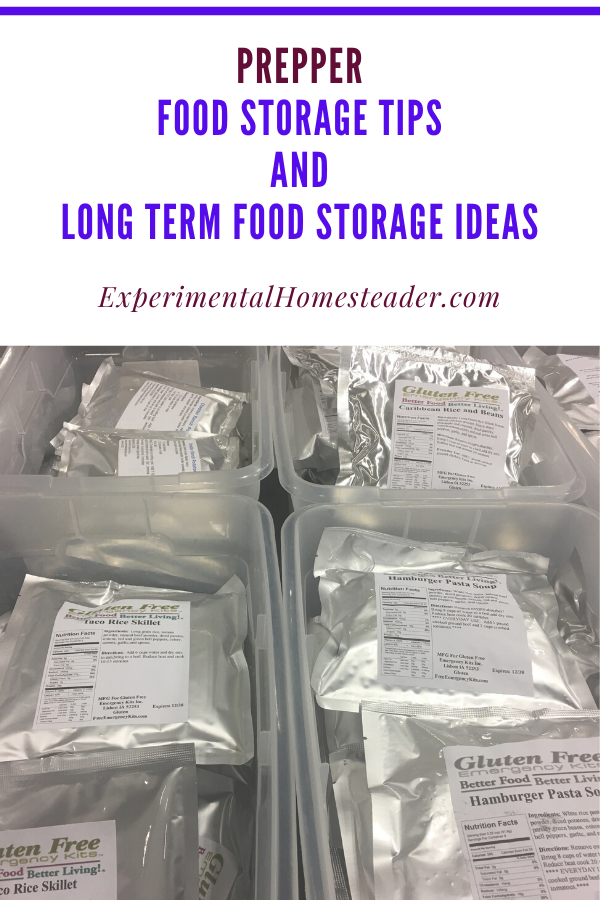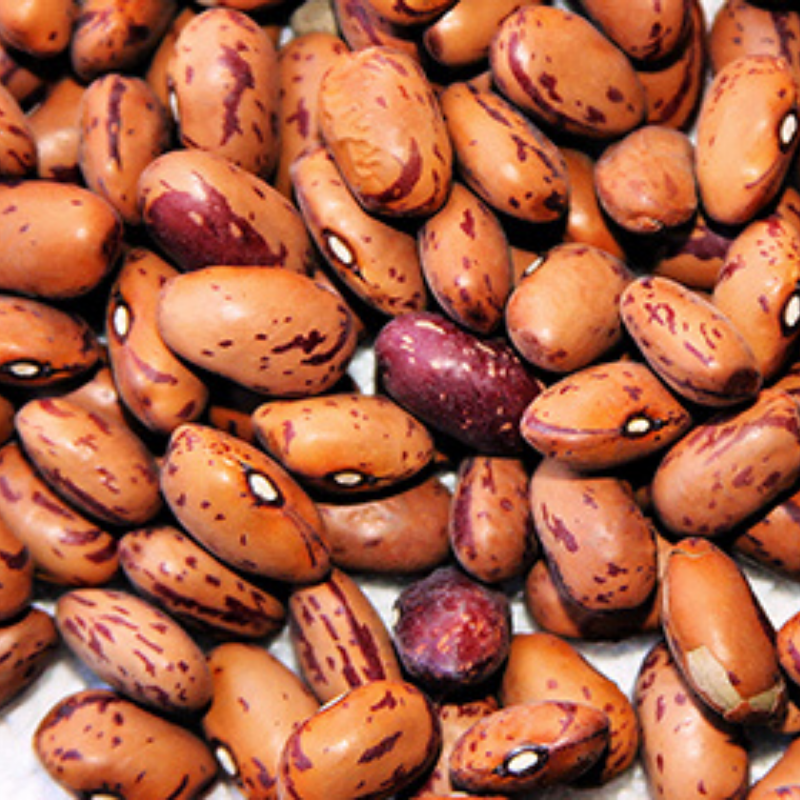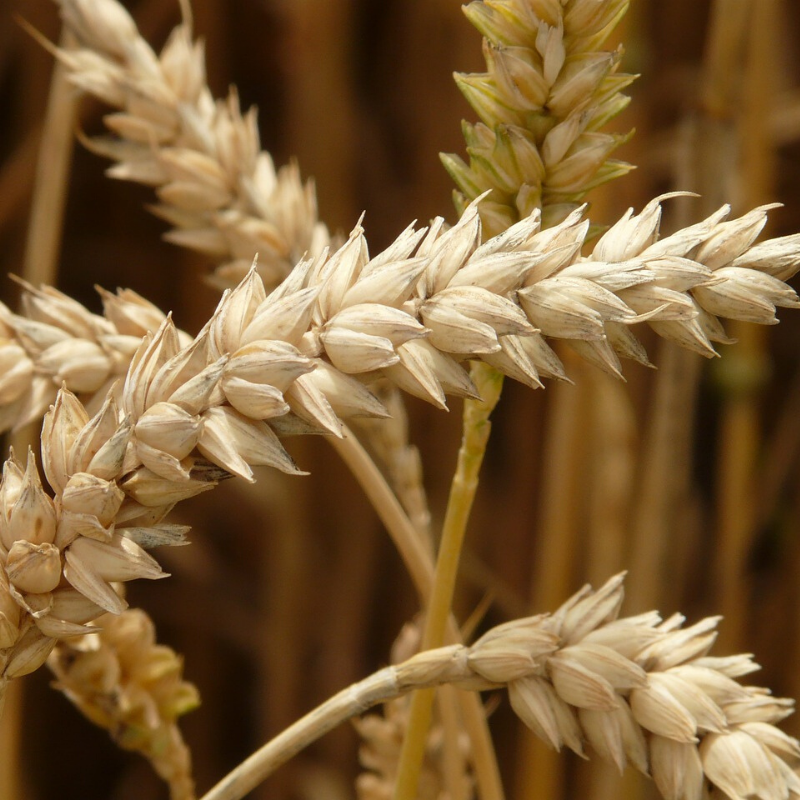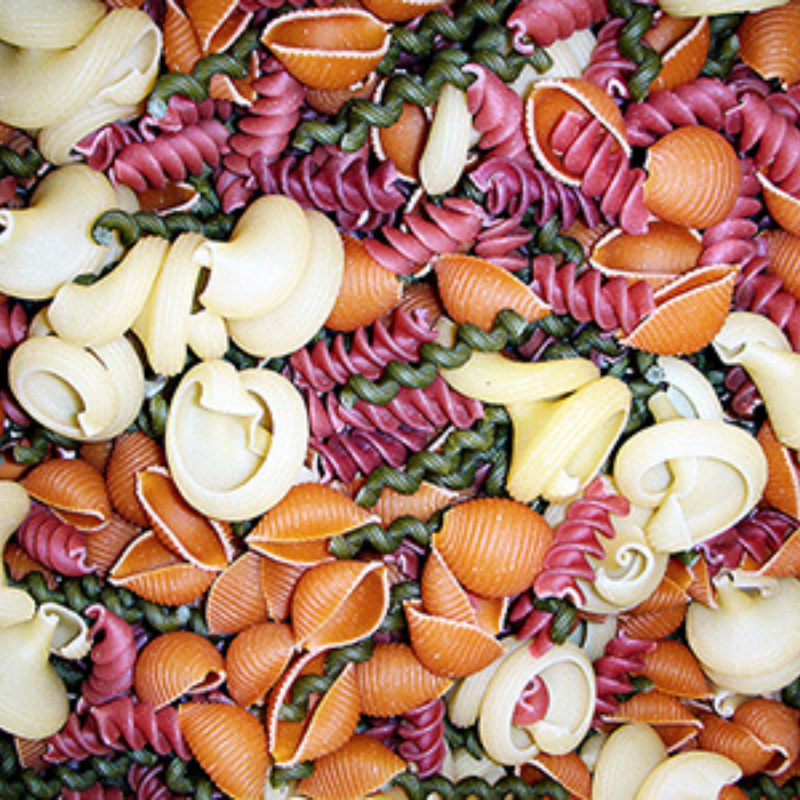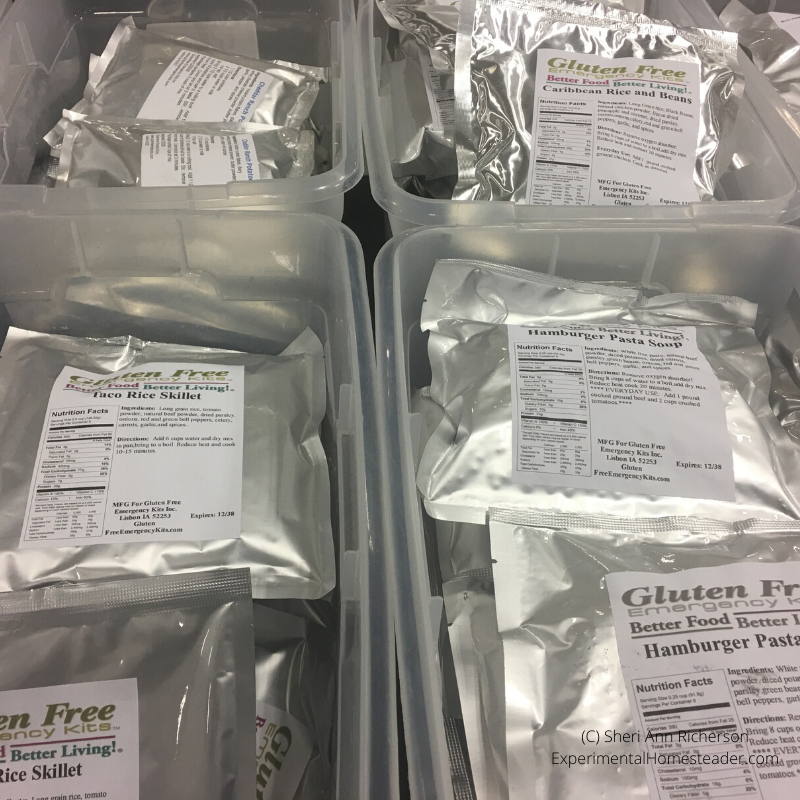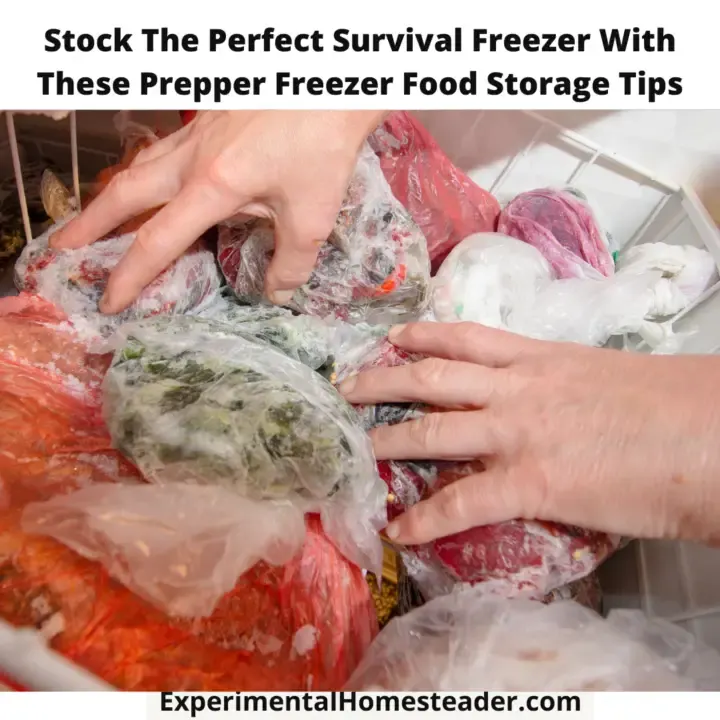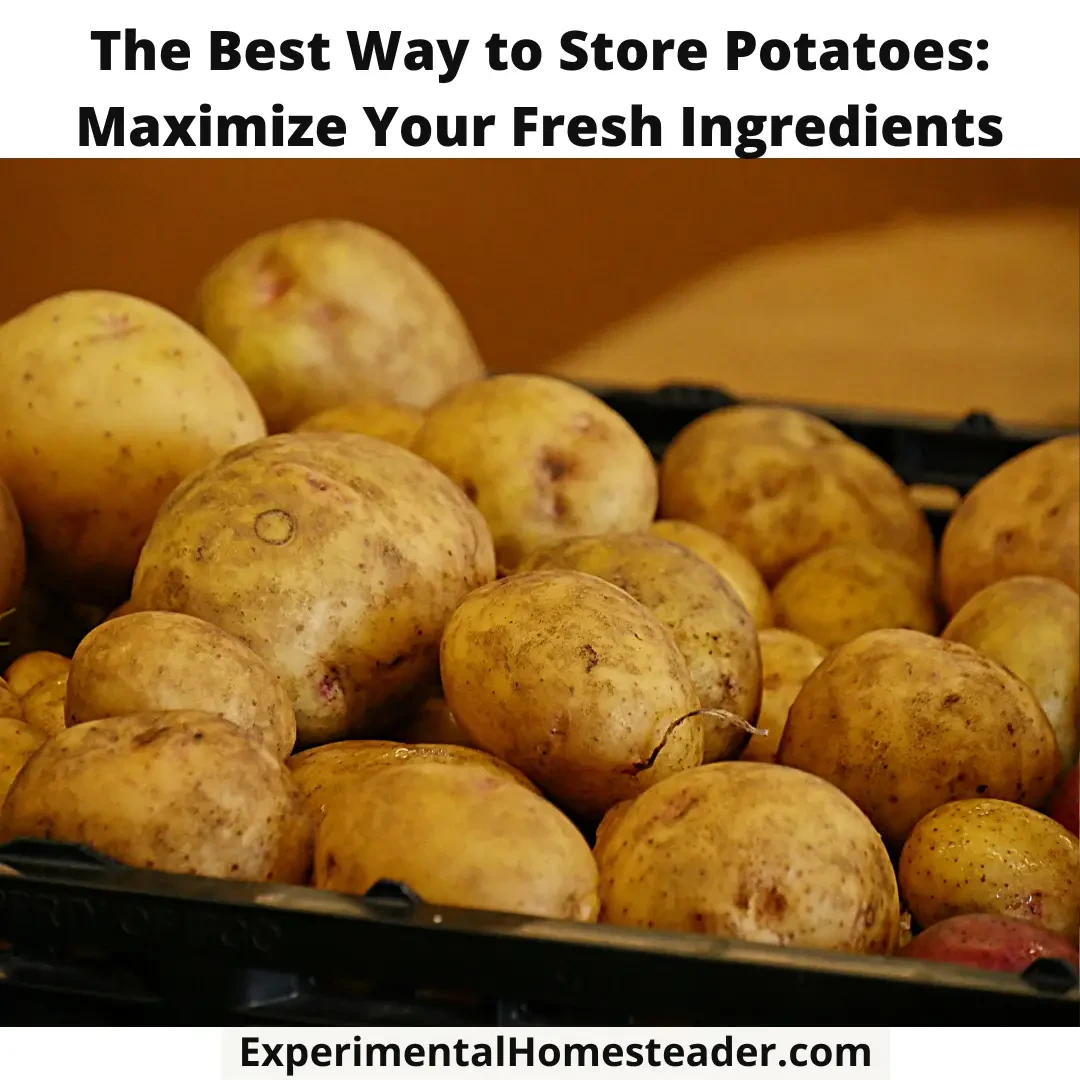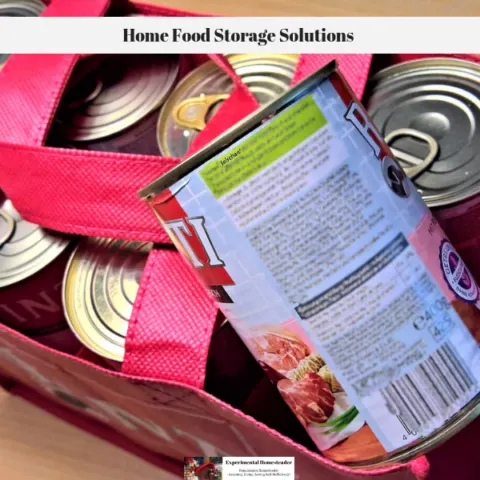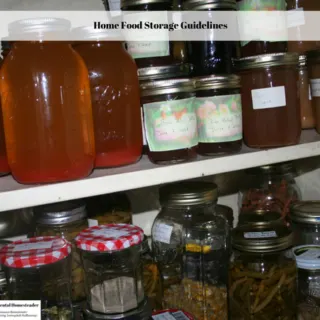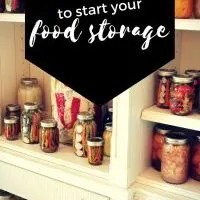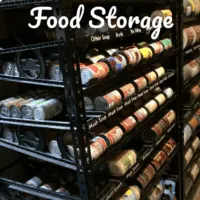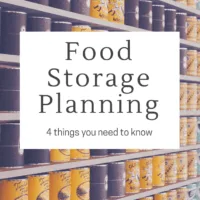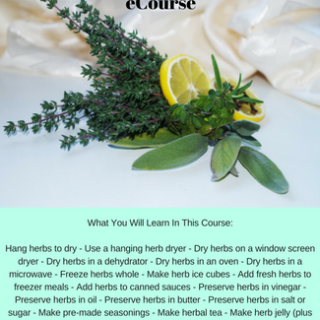It is important that you have food supplies set aside for your long term survival, which is why understanding these prepper food storage tips is essential.
For food to keep for any length of time, it has to be properly stored.
Not all foods are good for long term storage.
How To Choose Foods For Long Term Storage
It is important that you know which foods are good for long term storage and which ones are not.
Certain foods, if properly stored, will last for years.
If your goal is to have a long term food supply so that you can be self-sufficient you need to know which foods to choose.
Even if your goal is just to stock up for six months or a year, this list is still one to keep in mind because as we all know life can change in an instant.
The list below names foods that you should buy and put aside for the future because these items store well as long as they are properly packaged.
Beans
Buy dry beans in bulk quantity to save money.
Beans give you a supply of protein that is essential, especially if you find yourself in a SHTF situation where meat or other proteins are not readily available.
An alternative option to buying beans at the store is to grow them yourself and dehydrate or freeze dry them.
Grains
Choose whole wheat, oats, rye, cornmeal, brown or white rice, wheat flour and barley.
Store grains in your freezer, if at all possible.
This keeps bugs out and prevents any potential bug eggs that might be in the grains from hatching.
Be sure you have a hand powered grinder if you buy whole grains that you intend to turn into flour.
Grinding grain by hand is not an easy task, so it is best to practice before you actually need to do it.
Powdered Milk
This doesn’t taste the same as fresh milk, but this type of milk can last at least 20 years and you need milk – not only for cooking, but for drinking especially if you have children.
There are ways to powder milk at home but truthfully I would just purchase it and avoid the potential pitfalls of doing it yourself unless you have a freeze dryer.
It is easy enough to freeze dry milk at home and it is safe.
While it is possible to dehydrate milk, I do not recommend it for safety reasons.
Fruit
You will need to buy dried fruit or freeze dried fruit that you can reconstitute by adding water.
This is another item you can dry yourself at home using fruit you grow.
Choose fruit that is at its peak of ripeness and unblemished.
For more information, be sure to check out my post on how to determine the best fruits and vegetables to store.
I keep my dehydrated fruit in my freezer – not because I have to but because it keeps it safe from potential chewing critters and also prevents it from drawing moisture.
Another option to to store it in mylar bags or glass jars.
Other Long Term Food Storage Essentials
Make sure dried corn is part your long term food storage supply.
Again this is an item you can grow and dry yourself.
Buy sugar, honey, tea, coffee, peanut butter, nuts, seeds and salt.
You will want to buy canned or freeze dried meats as well, unless you have a Harvest Right Freeze Dryer and can freeze dry the food yourself.
Shorter Term Food Storage Essentials
Though these items do not keep as long as other survival foods, canned goods can last many years.
Practice rotational storage so you are always eating the oldest food and putting the newest cans to the back of the shelf.
Choose cans that are not dented, since the food in dented cans might be unsafe to eat.
Don’t forget to buy some pasta or make it yourself.
While pasta is considered a shorter term food storage item, it is possible to store pasta for a longer time period.
Oils like olive oil and fats like lard are other essential items, unless you plan to make your own as you need them.
For making your own oils you need an oil press and access to various types of seeds such as sunflower seeds, flax seeds, etc.
If you have a baby who is on formula, you will want to set aside a supply of formula for the baby but keep in mind, dry formula is best and it does have an expiration date.
How To Store Food For Long Term Storage
Just buying food is not enough.
If you don’t know how to store it, the food will go to waste.
I keep dry foods in an extra freezer – and while I realize that should the grid go down, the freezer won’t work, but for the time being they are protected from potential bugs or field mice.
For items I keep on the shelf, I always use sealed glass containers.
Foods that are put back in storage are susceptible to oxygen, light, moisture and temperature changes – especially heat.
You want to store the food in a cool room where the temperatures is less than 60 degrees.
Mylar Bags Are Essential For Long Term Storage
What some people like to do is to put a Mylar bag into the container first and put the food down into the bag.
Then the top of the bag is sealed using a heat source.
The Mylar bag helps keep out what would destroy your food source and makes it last even longer than it would last just in the container alone.
Oxygen Absorbers And Food Grade Silicone Gel Packets
For long term storage, choose oxygen absorbers instead of silicone gel packets.
Be sure not to use the two together as they oxygen absorbers require some moisture to work and silicone gel packets absorb all moisture.
Silicone gel packets work well for foods that you only intend to keep for six months to a year such as homemade herb and spice blends.
Foods designated for long term storage are best kept in mylar bags with oxygen absorbers in a cool, dark and dry location.
Containers For Long Term Food Storage
To properly store your food, you can use food grade containers.
You can get buckets like this at no cost from grocery stores and restaurants.
The only issue with using buckets is the potential for field mice to get into them.
An option is to store the buckets in a metal cabinet with a lock or in a freezer.
You can also purchase food grade buckets, use canning jars or other large glass containers with lids.
To help absorb the oxygen, you can put oxygen absorber packs into the containers.
Make sure that you put a date the outside of the container so that you know the month and year that you put the food into storage.
Rotating your food several times a year is one key to maintaining a healthy food supply.
It is also a good idea to take an inventory at least once a year – or keep track of what you use as you use it so you can replace it.
Food Storage Tips
Best Things To Stock Up On For Survival Now With The Shortages
With all the supply chain shortages and more shortages expected in the future, find out the best things to stock up on for survival now.
Survival Grocery List - First Month
Find out where to start your survival grocery list. The first month lays the ground work for basic survival needs and your emergency survival food list.
Stock The Perfect Survival Freezer With These Prepper Freezer Food Storage Tips
Learn how to stock the perfect survival freezer with these prepper food storage tips. Plus learn what to do if the grid goes down.
The Best Way to Store Potatoes: Maximize Your Fresh Ingredients
Discover the best way to store potatoes with the right selection, optimal storage conditions and routine checks & maintenance.
Best Foods For A Survival Pantry
Learn what the best foods for a survival pantry are and how you can build your own effective emergency food supply.
Building Resilience Through Prepper Pantries: A Guide for Homesteaders and Preppers
Learn how to build a Prepper Pantry, address dietary needs, and maintain security. Join the preparedness conversation.
10 Home Food Storage Solutions That Will Inspire You
These 10 home food storage ideas make family food storage possible even in small apartments. Now you can stock up on essentials and hide them in plain site.
Home Food Storage Solutions
Learn about home food storage solutions that are psossible even if you have limited space as well as how to stock up on food is essential for everyone.
Home Food Storage Guidelines
Long term food storage is a great way to be prepared for an emergency. Check out these home food storage guidelines and be sure to print the handy chart!
5 steps to Start your Food Storage
Are you overwhelmed with how to start building a food storage? You want to store food, but not waste space with food you don’t know how to use or will eat? Read below for 5 steps you can take to start you food storage and make it work for you.
How to Rotate Your Food Storage
It’s so hard to remember to use food storage when it’s stored all over your house… or downstairs in the basement. I get it, our is there too. That’s why I’ve come up with 8 tips to teach you how to rotate your food storage.
Long Term Food Storage Planning
Have you built up a small food storage and are looking to grow that into a year supply? There are a few things you need to know and will want keep in mind when planning for long term food storage so you can be sure you have the quality and type of food to fit your exact families needs. Once you know exactly what you need, then you won’t be wasting money and spending hundreds on items you don’t need.
How To Store Noodles
Learn how to store noodles including fresh homemade noodles and store bought noodles. Also learn how to store noodles long term.
How To Dry And Store Homemade Noodles
Learn how to dry homemade pasta plus the best method for storing homemade noodles so they stay fresh for up to six months!
Preserving Herbs For Winter Use eCourse
Do you love fresh herbs but wonder if there is an easy way to preserve them for the winter?
Do you seek other ways to use herbs other than just as a seasoning on food?
There are so many ways to preserve herbs for winter use – from various methods of drying them to freezing them, but it doesn’t end there.
Some of the best ways to preserve herbs in right in the foods you would normally incorporate herbs into – pre-made seasonings, teas, butter or oil.
Then this is the course for you!
What You Will Learn In This Course:
Hang herbs to dry
Use a hanging herb dryer
Dry herbs on a window screen dryer
Dry herbs in a dehydrator
Dry herbs in an oven
Dry herbs in a microwave
Freeze herbs whole
Make herb ice cubes
Add fresh herbs to freezer meals
Add herbs to canned sauces
Preserve herbs in vinegar
Preserve herbs in oil
Preserve herbs in butter
Preserve herbs in salt or sugar
Make pre-made seasonings
Make herbal tea
Make herb jelly (plus tips on how to use these)


